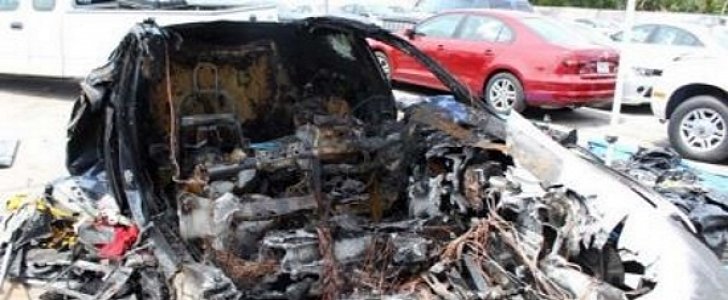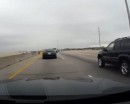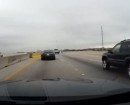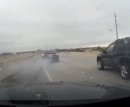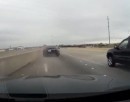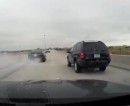A preliminary report from the National Highway Transportation Board (NTSB) published on the agency’s website rules that the single-car crash from May this year was caused by speeding.
The accident took place on the Seabreeze Boulevard in Fort Lauderdale and involved a Tesla Model S. At the time of the impact, there were 3 occupants in the car, all 3 teenagers. One was ejected and survived, the other 2 died on the spot: Barrett Riley and Edgar Monserratt Martinez.
According to the report, the accident was caused by speeding, as the Tesla was going 118mph in areas that imposed restrictions of 30 and then of 25mph. Data collected shows that the driver didn’t brake until 2 seconds before the impact, even though he had already lost control of the car by that time.
Riley had passed another car and was trying to get back in his lane when he lost control of the Tesla. It went off the road and smashed into a wall, but the engine propelled it forward, so it bounced back and hit the wall again. The second time, it burst into flames, but it still didn’t stop.
The Tesla careened across the Boulevard and eventually came to a stop when it hit a light post.
At the time of the accident, though it was clear speed had been a factor, it was thought that a faulty battery might have also played a part in the tragedy. It’s true that the battery ignited, the NTSB says, but it wasn’t the fire that caused the crash.
In fact, the battery caught fire more than once. After the crash, firefighters applied water and foam on the wreck, but the battery ignited again as the car was being loaded for removal. It would catch fire again “upon arrival at the storage yard,” the report says.
That said, it was excessive speed that’s to blame for the teenager’s death, the NTSB rules. An investigation is still underway, but chances of it changing the outcome are slim.
Riley’s family isn’t convinced, though. In a statement to the media, Barrett’s aunt, Pat Riley, expresses concern that this will be a cover-up of Tesla’s mistakes, which ended up taking 2 lives.
“We appreciate the NTSB for investigating this accident and hope more information comes forth. What is really at issue here for the family is why did these tragic deaths happen? This was clearly a survivable accident,” Pat Riley says. “The boys should not have died in a fire after they survived the crash without much injury. The fire killed these young men… not the accident. The fire was the problem. The fire should never have happened. Why did the electric car batteries catch fire and why was the car passenger not protected inside? That is what we want to learn.”
According to the report, the accident was caused by speeding, as the Tesla was going 118mph in areas that imposed restrictions of 30 and then of 25mph. Data collected shows that the driver didn’t brake until 2 seconds before the impact, even though he had already lost control of the car by that time.
Riley had passed another car and was trying to get back in his lane when he lost control of the Tesla. It went off the road and smashed into a wall, but the engine propelled it forward, so it bounced back and hit the wall again. The second time, it burst into flames, but it still didn’t stop.
The Tesla careened across the Boulevard and eventually came to a stop when it hit a light post.
At the time of the accident, though it was clear speed had been a factor, it was thought that a faulty battery might have also played a part in the tragedy. It’s true that the battery ignited, the NTSB says, but it wasn’t the fire that caused the crash.
In fact, the battery caught fire more than once. After the crash, firefighters applied water and foam on the wreck, but the battery ignited again as the car was being loaded for removal. It would catch fire again “upon arrival at the storage yard,” the report says.
That said, it was excessive speed that’s to blame for the teenager’s death, the NTSB rules. An investigation is still underway, but chances of it changing the outcome are slim.
Riley’s family isn’t convinced, though. In a statement to the media, Barrett’s aunt, Pat Riley, expresses concern that this will be a cover-up of Tesla’s mistakes, which ended up taking 2 lives.
“We appreciate the NTSB for investigating this accident and hope more information comes forth. What is really at issue here for the family is why did these tragic deaths happen? This was clearly a survivable accident,” Pat Riley says. “The boys should not have died in a fire after they survived the crash without much injury. The fire killed these young men… not the accident. The fire was the problem. The fire should never have happened. Why did the electric car batteries catch fire and why was the car passenger not protected inside? That is what we want to learn.”
